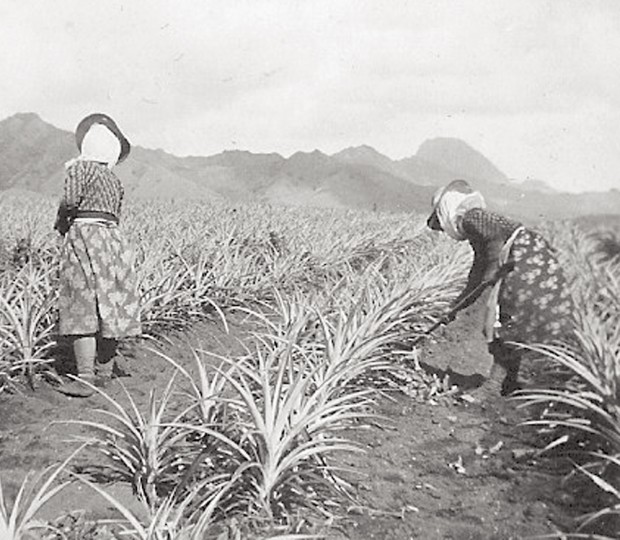LIHU‘E — On Kaua‘i, the first two pineapple plantations were established in 1906 in the Kalaheo area, followed by the Kapa‘a area, with its cannery on the waterfront. The pineapple industry on Kaua‘i was based on a cannery operation fed
LIHU‘E — On Kaua‘i, the first two pineapple plantations were
established in 1906 in the Kalaheo area, followed by the Kapa‘a
area, with its cannery on the waterfront.
The pineapple industry on Kaua‘i was based on a cannery operation
fed by independent, homestead farms.
Editor’s note: On Dec. 3, the Kaua‘i Museum celebrates its 50th anniversary. Museum leaders have chosen 50 stories from exhibits, collections and the archives of the museum to share with the public. One story will run daily through Dec. 3.
LIHU‘E — On Kaua‘i, the first two pineapple plantations were established in 1906 in the Kalaheo area, followed by the Kapa‘a area, with its cannery on the waterfront.
The pineapple industry on Kaua‘i was based on a cannery operation fed by independent, homestead farms.
Businessman and venture capitalist Randolph Crossley had, in 1931, invested in Hawaiian Tuna Packers, Ltd. in Honolulu.
At the time the wholesale price for canned tuna was $33 a case.
The Depression hadn’t yet hit Hawai‘i and by the end of 1931 prices went down to $13 a case.
It cost $15 a case to produce.
Just before he went broke Crossley was approached by a number of fisherman, mainly Okinawans, about building a cannery on Kaua‘i.
Their relatives, Okinawan farmers, had formed a co-op and needed the influx of cash to open their own factory at Kapahi to get a better return on their hard work. Crossley decided it was a good investment.
With his tuna factory going out of business he decided to enter the pineapple industry full time.
He found out quickly that there was a united front by the old guard against him setting up an independent concern.
He persisted, and by 1934 and 1935 he had put together a group of independent growers who had nowhere to sell their crops and hired respected men: Dorsey Edwards to run the operation and Walter Smith as the cannery superintendent.
Hawaiian Fruit Packers was in business. He bought out the initial group and by the end of World War II had a profitable business.
Along with the sugar industry, the pineapple industry faced organization of their labor from the International Longshoremen’s and Warehousemen’s Union (ILWU).
Hawaiian Fruit Packers was a small operation, about 2 percent of the industry. When the ILWU struck, there were a hundred pickets around the cannery.
Crossley had a lot to lose as he was the sole owner of the company and the strikers were determined to shut his operation down. Pineapple ripens at 4 percent a day and if he couldn’t can it on a daily basis he would again go broke.
It was a battle of wills, but the pineapple went in and the cannery operated with only 10 percent of the field hands reporting for work.
The experience taught Crossley a valuable lesson, and he made a deal with Stokley-Van Camp for exclusive rights to his canned fruit in exchange for guaranteed financing.
By the 1950s they bought Crossley out for cash and a lot of stock. The pineapple industry flourished until the 1960s and the last cannery closed in the early ‘70s.


